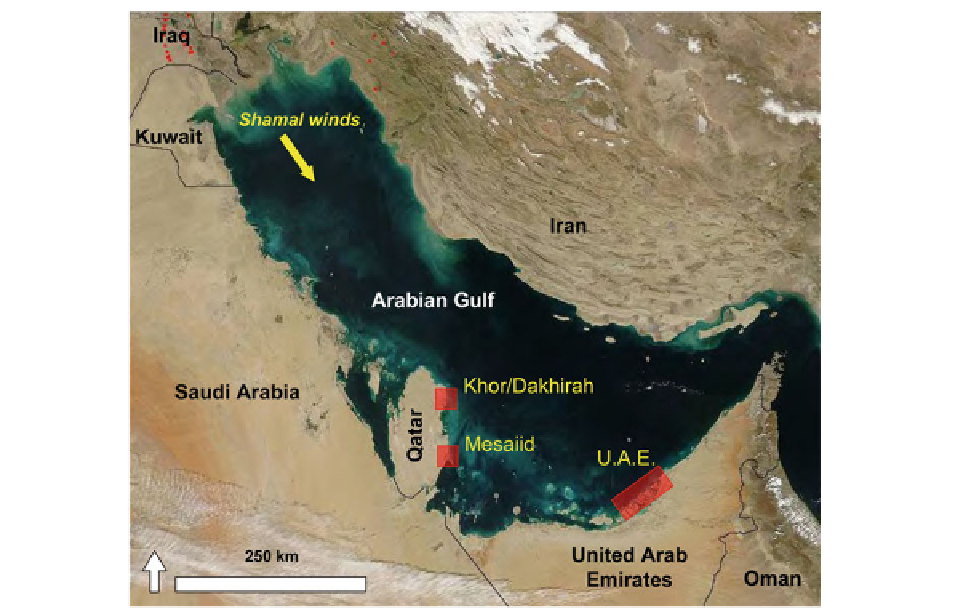Geology Reference
In-Depth Information
Fig. 19.12
Overview image of the Arabian Gulf, illustrating the location of the well studied sabkhas discussed in the text
offshore (Shinn
1973a,
b
). These sediments contain up
to 30% dolomite, which can be penecontemporaneous
(de Groot
1973
), or blown in from nearby eroding
Tertiary dolomites. Well-sorted, cross-laminated sand
occurs in the shoreface, and poorly sorted muddy sand
is found in some of the channels that extend inland.
Probing and coring by (Shinn
1973a,
b
) suggest that
bedrock lies more than 8 m below some of the lagoons
and present-day beach ridges, indicating considerable
Holocene accumulation. He did not describe any direct
bedrock infl uences on sedimentary patterns.
Although the entire area is underlain by muddy
subtidal sediments, suggesting long-term prograda-
tion, (Shinn
1973a,
b
) noted that some beach deposits
directly overlie intertidal and supratidal deposits.
Similarly, some beach ridges and spillover lobes cut
back and partially fi ll tidal channels (Fig.
19.14c, d
).
These geomorphic observations suggest that the
beaches are migrating landward, at least locally (Shinn
2010
in press).
As the beaches and spits migrate to the south (at
rates up to 40 m/year; Shinn
1973a,
b
) , they form a
local energy barrier that leads to development of pro-
tected lagoons and tidal fl ats, deposited in a shore-par-
allel zone up to several km wide behind the beach
ridges (Figs.
19.13
and
19.14
). Wide tidal fl ats include
predominantly muddy sediments and abundant mean-
dering channels (Fig.
19.14b, c
); narrow fl ats are grainy
and lack channels.
Landward of the intertidal zone lies a broad supratidal
sabkha up to 5 km wide. The sabkha in this area is fl ooded
only during the summer months, when winds blow from
the east. It includes predominantly muddy sediments with
thin storm lags of skeletal-rich sediment. Unlike the sab-
khas further south, the sabkhas of eastern Qatar have only
thin evaporites (2-3 cm thick crusts) (Shinn
1973a,
b
) .
Where not removed by defl ation, microbial laminations
and mudcracks can be found, and fenestrae are more
widespread than in the UAE tidal fl ats.
Further south on the Qatar peninsula, in the area of
Messaid (Fig.
19.12
), southward-migrating accreting
beach ridges are evident as well. This area contrasts with
the Khor region, however, in that well-developed tidal
creek networks do not occur between older beach ridges.

